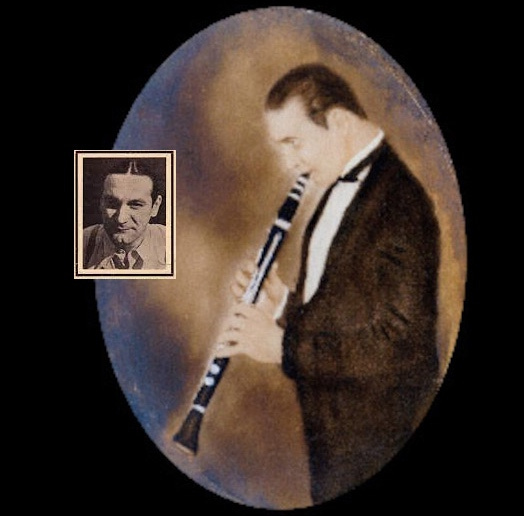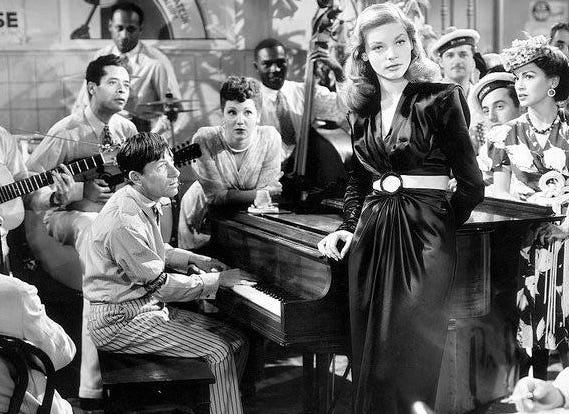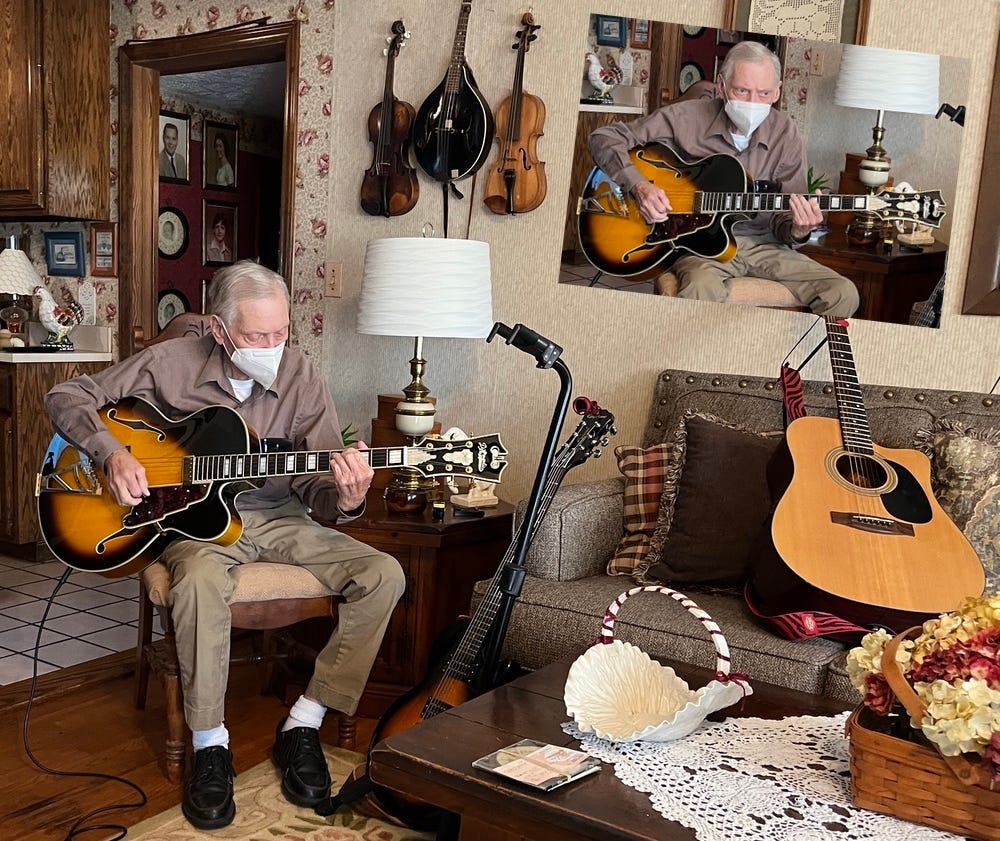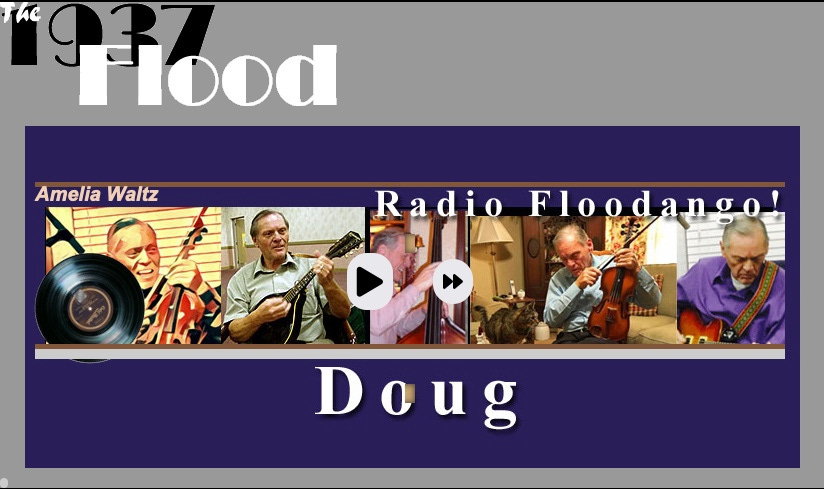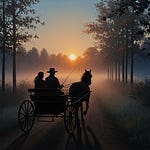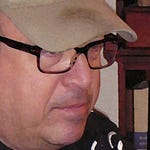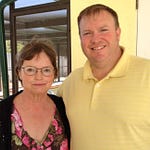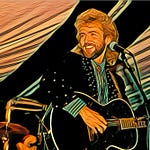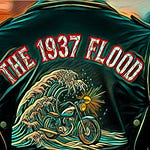Many “river” songs try to tap into the romance of riverboats, but few can claim to be born on the river and be written by an actual steamboater.
New Orleans clarinetist Sidney Arodin got his start in music in the 1920s working in bands that entertained on excursion boats that traveled up and down the Mississippi River.
“(Up a) Lazy River,” Arodin’s most famous competition, was a tossed-off composition based on a common jazz chord progression that Arodin learned on the boats to use as a warm-up exercise before a performance. For the tune, Sid simply slowed it down to a lazier pace.
Sidney’s Start
Now, the story goes that at 15 Arodin got his first clarinet and took lessons for only two months. This was the sum total of his "legit" musical training, until years later when he took a week off to teach himself a bit of music theory after being fired from a band for not knowing how to read the sheet music.
His very first gig was a Saturday night dance in his hometown of Westwego, Louisiana. When a combo hired from New Orleans hit town minus an ill clarinetist, Arodin ran barefoot through mud and oyster shells to grab his own clarinet.
From his 16th birthday onward, Arodin was rarely at home. First, he was hired on the riverboats, then he eventually made it to New York City where he worked with Johnny Stein's Original New Orleans Jazz Band beginning in 1922. (In the mid-'20s in that group he played with the young still-unknown Jimmy Durante.)
The Hoagy Carmichael Connection
It was during Sidney’s New York years that he met his famous collaborator. As Hoagy Carmichael wrote in his 1965 autobiography, Sometimes I Wonder, it was a mutual friend, Harry Hostetter, who introduced them.
“Harry met a lot of musicians in the Broadway area,” Hoagy wrote, “and he came running up to me one night.”
“‘This guy, Sidney Arodin, plays a pretty clarinet and he’s got a tune you gotta hear, Hoag.’”
“‘Where?’”
“‘Over on 56th Street in a clip joint.’”
That night, Hoagy and Harry dropped in. “It was a shabby brick-front walk-up on the second floor,” he recalled, “and the only customer was a balding man of about 55 with a hired girl on each arm, drinking champagne. They must have clipped this gent for five hundred at least before they let him out. Harry and I were guests of Sidney’s, so none of the girls glanced our way.
“Sidney played his tune and I was highly pleased,” Carmichael wrote. “I knew Harry couldn’t be wrong. In the ensuing weeks, I wrote a verse and a lyric and titled it ‘Lazy River.’”
Carmichael went on, “The ambition of every songwriter was now accomplished, although I didn’t know it then — that of having in his folio something on the order of a folk song that could be played and sung in most any manner, something that could be sung all the way through by drunken quartets or by blondes over a piano bar.”
Carmichael made the very first recording of “Lazy River” in 1930 for Victor with Tommy and Jimmy Dorsey, Joe Venuti and Red Norvo. That was followed in 1932 with cover versions both by Louis Armstrong and by Phil Harris.
One of the most beloved rendering of “Lazy River” came in 1942 with The Mill Brothers’ Decca recording, but, hey, there is no shortage of versions to choose from. It is one of the most recorded numbers in the Great American Songbook, and hundreds of covers of “(Up A) Lazy River” have been released, and are still coming out today.
Sid’s Last Years
In the 1930s, Arodin returned to Louisiana to gig with combos assembled by assorted New Orleans trumpeters, including Wingy Manone, Sharkey Bonano and Louis Prima. But for his last seven years starting in 1941, Arodin's health failed and his musical appearances became less frequent.
Curiously, while he cut quite a few sides with quite a few groups during his playing career, Sidney himself never recorded his most famous song.
Doug and The Jazz Box
Our take on the tune: Our buddy Doug Chaffin wasn’t feeling too swell earlier this week when Randy Hamilton, Danny Cox and Charlie Bowen landed on his doorstep. However, we brought with us a secret medicine just guaranteed to make him feel better. It was Charlie’s new guitar, a sweet 2016 D’Angelico Excel — a hollow-body arch top jazz box — which we immediately put into Doug’s experienced hands.
Well, after Doug strummed a chord or two, we could hear him already smiling behind his face mask. Listen to him just swinging in the living room on this great old jazz standard.
More Doug? Coming Right Up!
If you’d like to spend a little more time with Doug Chaffin in your ears, check out to the Doug Channel on our free music streaming service, Radio Floodango.
A couple dozen Doug-enriched tracks await you. Click here to get started.




